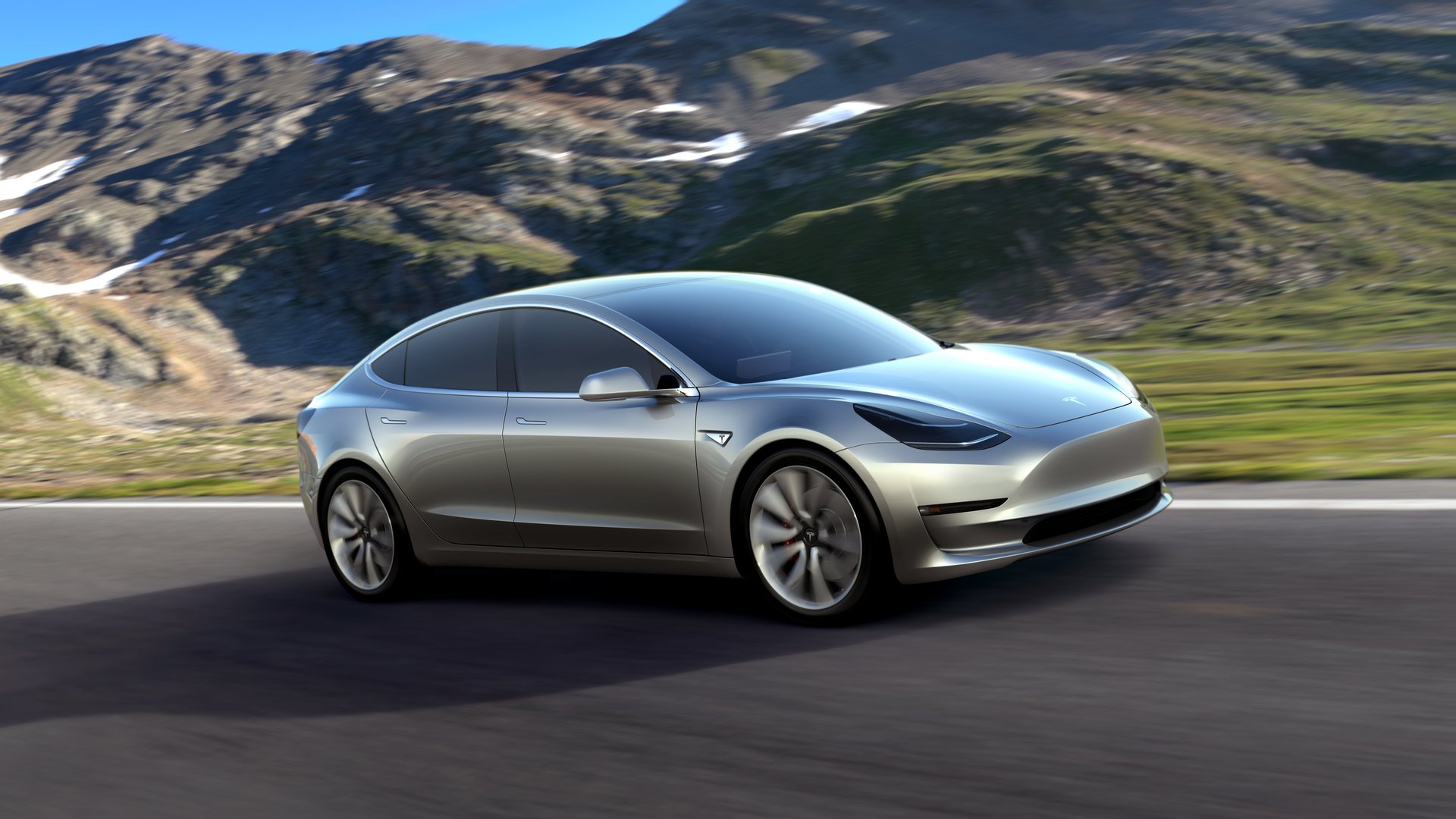Tesla is about to deliver the Model 3, its most inexpensive vehicle and most valuable asset
The $35,000 Model 3 due to roll off the assembly line today is the most inexpensive vehicle Tesla has ever made. But nothing has been more valuable to the electric car company.


The $35,000 Model 3 due to roll off the assembly line today is the most inexpensive vehicle Tesla has ever made. But nothing has been more valuable to the electric car company.
As its stock has plunged, shedding more than $10 billion in market value over the past two weeks from a June 23 peak of $63 billion, Tesla’s hopes for the future are riding on its new mass-market vehicle, intended to vault it into the ranks of the world’s biggest car makers. Tesla CEO Elon Musk has said that the company will be manufacturing 400,000 Model 3s every year by 2018, up from a total of 83,922 of all models in 2016. On July 3, Musk tweeted that the first serial number Model 3 would arrive later this week.
For the last few months, Tesla has been the world’s most valuable carmaker, despite recording just a handful of profitable quarters in the last decade. Tesla’s headstart in electric vehicle and autonomous technology, and its battery and solar panel businesses, entranced Wall Street. In theory, this is a celebratory moment for Tesla that could soon put it on par with American’s major auto manufacturers. Former Wall Street Apple analyst-turned-investor Gene Munster compared the Model 3 launch to that of the iPhone, when Apple ushered in the era of mobile computing.
But investors and analysts aren’t so sure. Tesla’s dizzying valuation is sinking back to earth (despite being up about 50% for the year), after a string of manufacturing complications. The stock decline follows the announcement of a slower timetable for the Model 3 rollout. Tesla also told investors on July 3 it had delivered just 22,000 vehicles over the last three months, barely meeting its delivery target, due to a “severe production shortfall” in building advanced battery packs. That’s now resolved, according to the company (pdf), and it now says it will be ramping up Model 3 production to about 20,000 per month by December. That’s a few months behind previous forecasts, although Musk had warned timing of the ramp up was uncertain.
Investors are wary Musk can exponentially ramp up vehicle production to build more cars next year than the company has produced over the last ten. Investment bank Goldman Sachs noted on July 5 that Tesla’s shortfall may represent peak demand for its existing models, and foreshadow difficulties with the Model 3 (Tesla says it expects orders to continue to grow). Earlier this year, Goldman Sachs switched its stock recommendation to “sell” over concerns about cash flow, production delays, and executive departures.
But financial markets have been pricing Tesla on the potential of what it might become—a vertically integrated energy company that also makes vehicles—say analysts, not its profitability today, a point even Musk agrees on.
Tesla is now facing global challenges. Automobile demand is flagging just as competition starts to intensify. The US car market seems to have stalled out at about 17.5 million new cars sold each year, and Tesla has yet to become a major player in the Chinese market, which is seeing explosive growth in electric vehicles. General Motors beat Tesla to market with its all-electric Chevy Bolt, and the Swedish company Volvo, now owned by the Chinese automotive conglomerate Geely, said in a press release this week that all its vehicles will be partially or fully electric by 2019.
To compete, Tesla will need to sell as many Model 3s as it can manufacture (it has deposits for about 400,000 vehicles so far) and then, crucially, turn a profit. Until recently, Tesla has been a maker of luxury electric vehicles, a growing yet small niche in the US electric car market representing only 1% of new vehicles sold annually. But Musk has never veered from the course he set more than a decade ago in his “Secret Tesla Motors Master Plan”:
Build sports carUse that money to build an affordable car
Use that money to build an even more affordable car
While doing above, also provide zero emission electric power generation options
Don’t tell anyone.
As promised, Tesla’s first $109,000 Tesla sports car in 2008 was succeeded by the $75,000 Model S sedan in 2012 and the Model X SUV in 2015 priced around $82,500. After building (and acquiring) a solar and battery business, Tesla is now building that “even more affordable” Model 3 to entice the average car buyer.
Musk has mused before that Tesla could one day become the world’s first $1 trillion company. Let’s see if the company can stick to its roadmap.
Correction: A previous version of this post stated the number of Model 3s planned for production in 2018 was 500,000. This is the total number of cars. Tesla plans to produce 400,000 Model 3s.